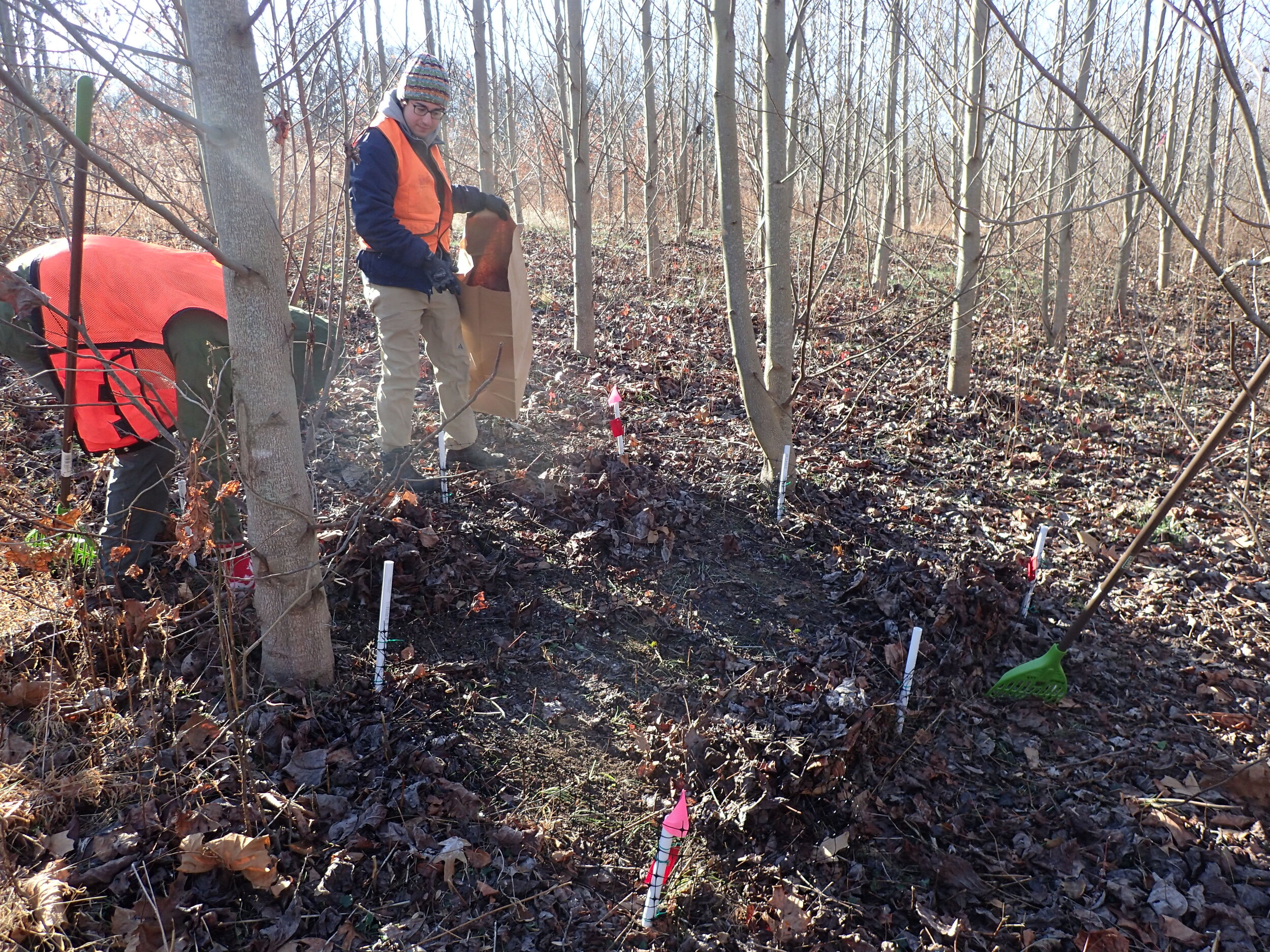What does a bee know of a pandemic? Nothing; it does not understand its own species’ hardships nor ours. I watch as a blissfully ignorant bee flies by. Varroa mites, neonicotinoids, Colony Collapse Disorder—it's a lot to deal with. Yet this little bee has survived and keeps buzzing along. This gives me hope for our own COVID-19 crisis. I think that is okay. Right now it can be easy to be lost in despair. While we shouldn't become careless or take our privilege for granted, sometimes it is healthy to feel optimistic.
This is also how I feel about ecology. Too often we focus on our failings. In conservation, there are many. But it's hard to create change with sorrow clouding the mind. This is why I choose to study ways that each one of us (scientist or not) can help conserve our environment.
My research investigates how homeowners can protect insect populations on their property by leaving leaf litter on their yards each autumn. Each year we remove more than eight million tons of leaf litter from residential homes. However, many insects, such as butterflies and moths carry out important parts of their life cycle in the leaf litter during the winter. Leaf litter also offers complex structures to hide in and protection from rapid temperature changes. As such, our autumn yard maintenance may either directly kill or make habitat unsuitable for many insects. The extent to which we are harming insect communities with these practices is unknown. We also don’t know if there are strategies, such as maintaining native diversity in our yards, that could mitigate the effects of this disturbance. Therefore, I’m studying how disturbing leaf litter, through adding, raking, or mulching leaves, affects insects that emerge from the forest floor each spring. I’m also examining if insect communities in diverse forests are more resilient to disturbance.
Conceptual model proposing the effects of litter disturbance and diversity. The red circle indicates my primary response variable, dashed circles represent other variables that may be correlated, and lines represent mechanisms behind the proposed effects.
The first part of my research takes place in the BiodiversiTREE experiment at the Smithsonian Environmental Research Center (SERC) near Annapolis, Maryland. Seven years ago, this experiment was planted with native trees in plots of either multiple tree species (polyculture) or only one tree species (monoculture).
Satellite imagery of BiodiversiTREE, a tree diversity experiment. Each yellow dot indicates one of my research quadrats within a 35 x 35 meter monoculture or polyculture tree plot.
My project began last September when I placed 24 research quadrats in both polyculture and monoculture plots. Each quadrat was divided with deer fencing into four 1x1 meter quarters for different leaf litter disturbance treatments. After the leaves had fallen, I collected and weighed leaf litter from each quadrat. Then I divided the leaves into four quarters. One quarter was mulched through an electric leaf mulcher for the mulch treatment, two quarters were combined for the addition treatment and the last quarter was left unchanged for the control treatment. Then I returned each quarter to the quadrats from which they were collected.



I took temperature readings in each treatment throughout the winter. Then in March, I set up emergence traps to capture any insects which had been overwintering in the plots. Now, I’m collecting from these traps every two weeks. The next step is to begin identifying my insect collection. This is no small task, so I will first focus on butterflies, moths, and insects that control pests.
Emergence traps are set up in each quadrat. After insects emerge from the forest floor, they fly into the top bottle, the highest and brightest point. Then they exhaust themselves and drop into the lower bottle which is filled with alcohol. I switch out the lower bottles every two weeks.
The second stage of my research is very similar to the SERC study, but will take place in volunteer homeowner’s yards. I will be comparing overwintering insect emergence in yards that rake and remove their leaves with yards that retain their fallen leaves. If you are interested in being involved in this study, please click the button below for more information.
I am impressed with how successful my research has been so far. I remember feeling overwhelmed at the scale of the project less than a year ago. Since then I have mowed five foot tall golden rod, hammered over 300 PVC pipes into the ground, and constructed 100 emergence traps from scratch- all while taking classes and teaching. But while it has been difficult, I feel a great sense of accomplishment. Now with spring comes a momentary break. I am thankful that my loved ones are safe and my research has not been drastically interrupted. I know many less fortunate. As I collect bottles from my emergence traps, I take the time to notice the flowers and the busy bees getting to work.
By Max Ferlauto, Master’s student


